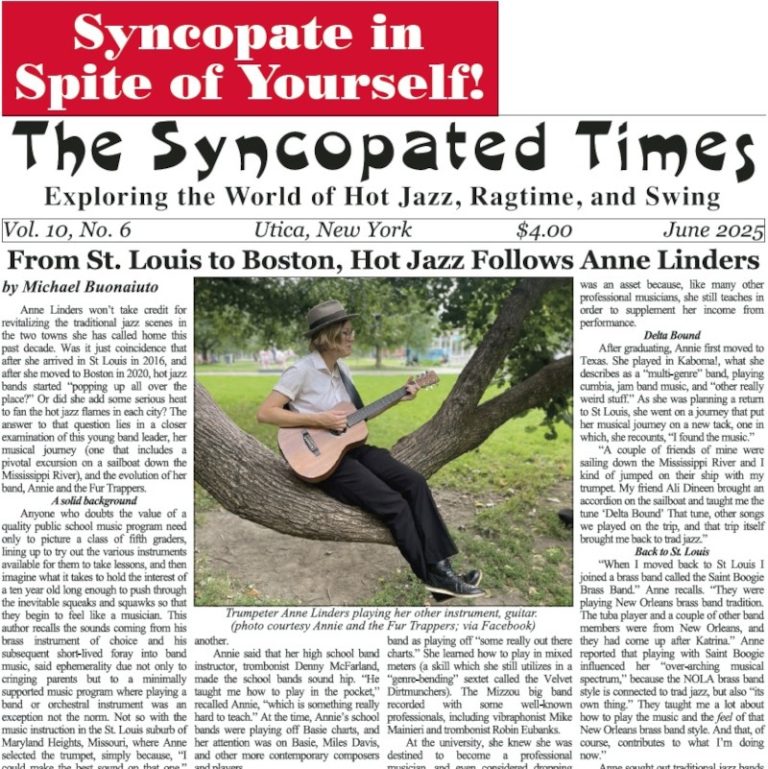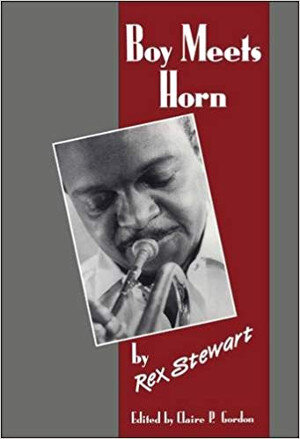 The great cornet player Rex Stewart, best known for his work with Fletcher Henderson and Duke Ellington, was also a prolific writer. He contributed to Downbeat, Playboy, and Jazz Journal and a number of his pieces were collected and published as the well-respected Jazz Masters of the Thirties. Boy Meets Horn, Stewart’s autobiography, was compiled in the 1960s by editor Claire P. Gordon from his writings-some complete, some mere scraps of paper.
The great cornet player Rex Stewart, best known for his work with Fletcher Henderson and Duke Ellington, was also a prolific writer. He contributed to Downbeat, Playboy, and Jazz Journal and a number of his pieces were collected and published as the well-respected Jazz Masters of the Thirties. Boy Meets Horn, Stewart’s autobiography, was compiled in the 1960s by editor Claire P. Gordon from his writings-some complete, some mere scraps of paper.
In Boy Meets Horn, Stewart shows himself to be a keen observer of the jazz scene, but he himself remains a somewhat elusive protagonist. We’ll take a look at early 1920s-late 1940s jazz history through Stewart’s eyes, and try to read between the lines to get a better understanding of Rex Stewart—a complicated man.
Stewart was raised in Washington, D.C. and it was surprising to me how extensive the early jazz scene was in D.C.; this, despite the fact that I lived in D.C. four years and taught at the Duke Ellington High School for the Performing Arts. The cast of local characters includes Doc Perry, Ed (later Duke) Ellington, Elmer Snowden, Cliff Jackson, the Eglin Brothers, Art Whetsol (later with Ellington), Marie Lucas, and the trombonist in her band, Juan Tizol.
This somewhat hidden history feeds into a trope that Stewart returns to several times in the book. Namely, that the primacy of New Orleans in jazz history is overstated. He says that he and his D.C. pals “had a Dixieland band without any of us ever having been in New Orleans or ever having heard any New Orleans music!” He also says: “I recall the many musicians who were playing ragtime and funk and other forms of music which were the forerunners of jazz. None of these people were influenced by anyone from New Orleans, as far as I know.”
It was a musical city and Stewart’s was a musical family. As is true with many great jazz performers, Stewart was a prodigy and a short time after he began playing cornet, he was selected as a member of Ollie Blackwell’s Clowns in 1921, at age 14. He then joined the Musical Spillers, which was one of the acts in the vaudeville show Go-Get-It which traveled up and down the East Coast. He was let go from the band for breaking some of the Spillers’ rules, and we see here a pattern that was to be repeated several times in the book: that “booze” was a long-time part of Stewart’s life, as was being fired.
After leaving the Spillers in New York, Stewart was hired for the band at Small’s, replacing June Clark. Once again, he was fired because “The drinks got too potent too often.” But it was no big deal to Stewart, who says that the scene in New York was so active that “a guy could get fired at 9 o’clock and be on another gig at 10 o’clock. Really!”
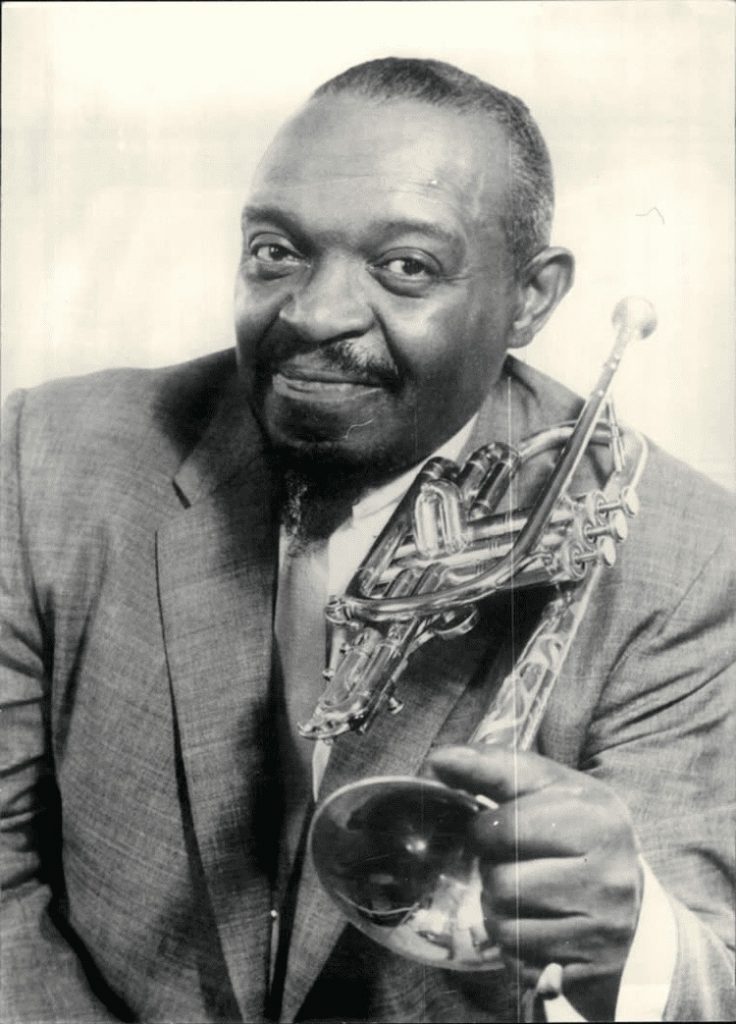 He describes a “may the best man win” situation, where a single musician or an entire band could walk into a club and finish a tune, out-blowing the band onstage and take over the job. Stewart says his was “a motley crew, composed of almost every race and color,” but he also says that black musicians had disdain for most white bands, which “could not hold a tempo, much less a beat!” There was race mixing, but people had to find ways to finesse it—especially in the South. For example, Bubber Miley played for Leo Reisman, but in theaters, had to sit behind a screen or the entire band had to play in shadow.
He describes a “may the best man win” situation, where a single musician or an entire band could walk into a club and finish a tune, out-blowing the band onstage and take over the job. Stewart says his was “a motley crew, composed of almost every race and color,” but he also says that black musicians had disdain for most white bands, which “could not hold a tempo, much less a beat!” There was race mixing, but people had to find ways to finesse it—especially in the South. For example, Bubber Miley played for Leo Reisman, but in theaters, had to sit behind a screen or the entire band had to play in shadow.
Stewart describes the social hierarchy of black musicians in the 1920’s. The Clef Club clique was at the top, next were the burlesque-vaudeville musicians, which included many who eventually became well-known in jazz and a few big bands, like Doc Cook and Henderson. Then, there was the group of musicians who played the small clubs and dance halls in the city, which is where Stewart (contentedly) places himself.
He doesn’t talk about his own skill, and seems to have little ambition, but Stewart is clearly impressing people with his horn playing and he plays with many groups. He seems to be having a ball; swimming and roller skating during the day and playing, drinking, and womanizing at night. At a place in the Bronx called Dashy’s Inn he “acquired the champagne habit, thanks to the Jewish and Irish race track plungers who scorned any other beverage.”
At the same time, Stewart writes asides about himself, like: “I was probably a bit too cocky for my own good,” and alludes to rougher encounters, describing “punches being exchanged” “It does seem as if I was involved in a bit of violence here and there…” Clearly, he wants to be accepted as one of the guys, but does not want to get involved in any mob activity and even leaves the city for a couple of months in order to avoid a would-be criminal benefactor. The milieu was Runyon-esque, but it’s hard to tell how comfortable Stewart really was in this knock-about environment.
All this frantic activity happens in a world where Jim Crow was solidly in place. In one telling episode, Stewart and pal saxophonist Happy Gladwell were booked to play in a casino in Newark, and could not find a place that would give them a room within 75 miles of their gig. They bought and pitched a tent behind the casino, which seemed to be a good solution until “a big black bear stuck his head inside the tent!”
It was after the Newark gig that he says he first heard the Oliver-Armstrong recording “Mabel’s Dream,” which he says “changed all my ideas about music.” Back in NYC, he went in search of more records and ran into trombonist Jimmy Harrison, who told him that Elmer Snowden had been looking for him. That chance encounter was to set the course of the next 20 years of his life.
He joined Snowden in 1924 and they played at the Balconnades, the Kentucky Club, the Strand Roof, and the Nest Club, all in NYC. Their schedule was grueling, playing breakfast dances, matinees and evening sessions, and rehearsing every night after the gig. Stewart recalls having gotten into a fight where a band-mate punched him and split his lip. But Snowden would not let him off the hook, saying: “Don’t forget, there is a little boy around the corner who is dying to rehearse with us.” So, Stewart, only 17 years old himself, “just had some whiskey and made the rehearsal.” He credits booze with keeping them all going, but adds “…it’s not too surprising that, with this exhausting pace, some of us didn’t make it into middle age.” Stewart died at age 60.
Louis Armstrong heard him playing with Snowden and was impressed enough to recommend Stewart as his replacement in Fletcher Henderson’s band. But in fact, Stewart was very afraid of trying to take Armstrong’s place. He had to be pushed to do it by Snowden. Even then, Stewart says: “I took the job, [in 1926] but my heart wasn’t in it…I had the feeling that the man wasn’t born who could follow the King-and I still feel that way.”
It turns out the Henderson gig wasn’t easy and was made a lot more difficult by the cantankerous, gun-toting trombonist Charlie Green—nicknamed “Big Green”—who took a dislike to Stewart, for reasons Stewart doesn’t understand (or doesn’t explain here) and basically drove him out of the band.
Fletcher Henderson and his wife, known as Miss Lee, stepped in and decided that the 18-year-old Stewart should go to Wilberforce College and join up with younger brother Horace Henderson’s group the Henderson Collegians, which he did. Benny Carter also joined that group and created a crack outfit, which eventually bested McKinney’s Cotton Pickers in a battle of the bands in Detroit.
Stewart returned to Fletcher’s band in 1928 and describes life on the road in detail. The long hops, dealing with racism, the joys of playing, the escape valve of elaborate pranks, the vagaries of recording—and being told what they could and could not record for the “race music” market.
Stewart married and as fatherhood loomed in 1930, at age 23, he left Henderson for a better offer with McKinney’s Cotton Pickers, but continued to sometimes play with Henderson’s outfit. This went on for 11 months until McKinney got tired of it and told Stewart to choose. He opted to return to Henderson, but another firing loomed.
The story, as related by Stewart, is this: Henderson was asked to play a benefit for the Scottsboro Boys. Stewart told Henderson that he was too tired to make it and this seemed to open the door for many of the other guys to say the same thing. Soon after, Henderson said he was firing Stewart because he played too loud and that “I was trying to take the band away from him.” Stewart says those reasons were not real and that 30 years later, he learned that he was blamed by the organizer of the benefit for the band’s refusal to appear, which embarrassed Henderson and provoked him to fire Stewart. I’m not sure Stewart’s account tells the whole story.
This was 1934-34 and Stewart’s next move was to start his own band. But he was no businessman, didn’t seek good business advice and the group, although musically successful, disbanded. He then went with Luis Russell’s orchestra. Meanwhile, he ran into his homey Ellington, who asked him to join his band. The Ellington modus operandi in negotiating with musicians was to low-ball and slowly raise the money as necessary until finally reaching an agreement.
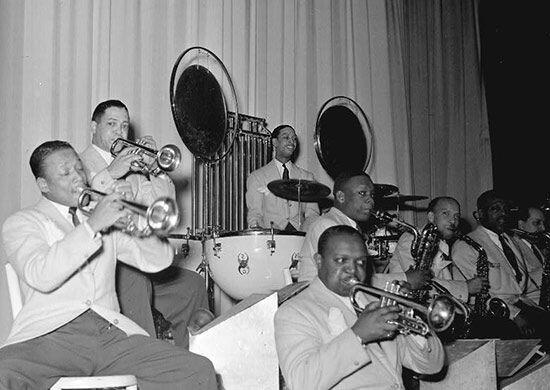
As usual in first negotiations, Ellington didn’t offer enough money and Stewart was going to stay with Russell, but Russell had heard he was negotiating with Ellington, considered him disloyal and fired him. Stewart says he felt very close to Russell, but wasn’t given a chance to explain. The fact stands out that, once again, Stewart wasn’t able to be aggressive enough to make his voice heard. So, in 1934, he joined Ellington’s aggregation.
Stewart gives us a detailed look at what it was like to be in Ellington’s band and I won’t go into detail here, but recommend this book to anyone interested in a behind the scenes look at Duke and his talented, idiosyncratic pool of musicians. It’s important to note the orchestra’s acclaimed visit to Europe in 1939, which afforded Stewart the chance to receive some recognition for his songwriting. He had jammed in Paris with Django Reinhardt, the great guitarist, whose genius, Stewart says, reminded him of bassist Jimmy Blanton. This led to a recording session, at which several of Stewart’s tunes are played and which is one of finest sessions the cornetist ever recorded.
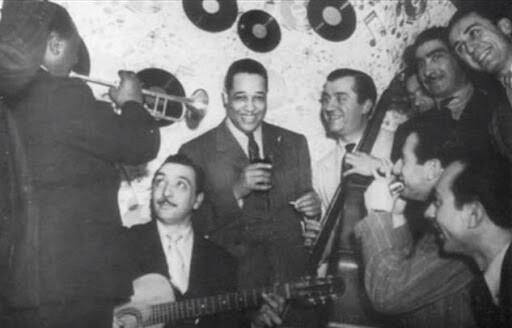
Once again, departure from an orchestra looms and in this pivotal situation, Stewart doesn’t go into detail, saying only: “a new member of the Ellington organization was harassing me.” I can only speculate that he may be alluding to Shelton Hemphill, who’d joined Ellington’s trumpet section in 1944.
Rex Stewart is on a December 3, 1945 Ellington recording, but not on the next one, onDecember 29, when his replacement is Francis Williams. Other sources say Stewart had been on the outs with section-mate Cat Anderson for many years. In any case, he did have other opportunities beckoning and in 1947, he brought a 6-man combo to Europe and played at 45 Hot Clubs and while in France, took courses at the Cordon Bleu cooking school in Paris.
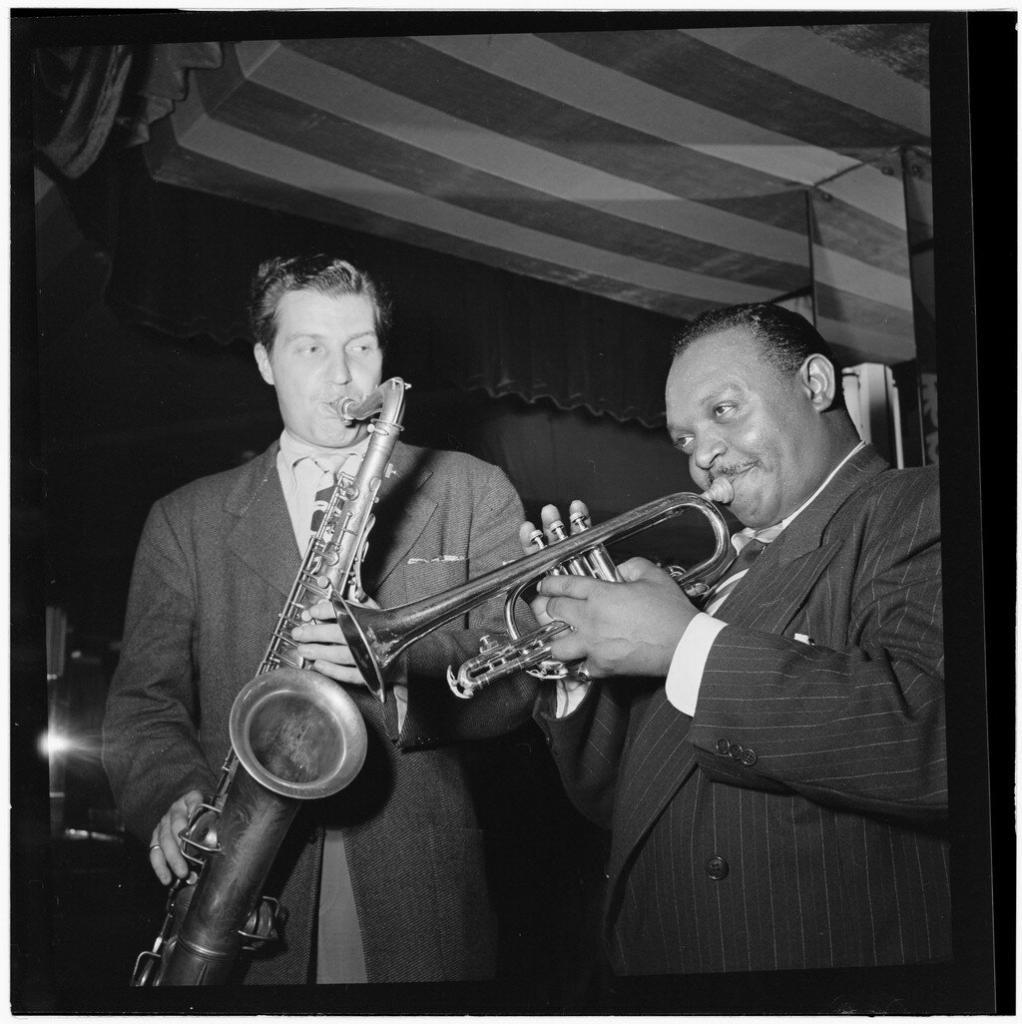
It’s at this point, in the late 1940’s that Stewart stops chronicling his own life in Boy Meets Horn and moves into a general discussion about life and music. He did live another 20 years and continued to play, touring with Jazz at the Philharmonic from 1947 to 1951, appearing as a studio musician on the Steve Allen TV show, and hosting a jazz radio program in Troy, New York. He also led and recorded with the Fletcher Henderson reunion band in 1957-58. Following that, he moved to Los Angeles and re-connected with some Ellington sidemen, playing sessions in clubs around the area. As noted, he was also active as a writer, publishing jazz criticism and commentary.
The final section of Boy Meets Horn is Stewart’s lament for the situation in jazz. There’s no specific designation of when this section was written, but I assume in the 1960’s. It reads like the words of a fairly bitter man. Stewart says he understands why so many musicians have gone to Europe, a place where “we are treated like human beings in an un-segregated atmosphere…Television dealt a crushing blow to the music industry…by virtually closing its studios to music except as background. And much of that is canned.” He adds that radio show orchestras were also gone and that nightclub jobs dried up. Stewart is concerned about the treatment of female jazz musicians: “one of the most subtle and vicious forms of segregation continues to be perpetrated against the women…”
I think there’s a tendency to look back at the 1920s jazz scene with a certain amount of romanticism; natural, I guess, given the tremendous amount of creativity generated and the cultural trappings of the liberated “jazz age.” But let’s not forget how hardscrabble and precarious a life it was for musicians—especially black musicians.
Think about the fact that Stewart is only 16 or 17 years old when he leaves the Spillers in New York City, 17 when he joins Snowden and just 18 when forced out of Henderson by Charlie Green. It’s reasonable to think that a teenager who enters that world will be forced to make radical efforts to adapt. For me, this goes a long way to explaining the complicated matrix of Stewart’s life. On the one hand, trying to be one of the boys—drinking, womanizing, fighting. On the other, seemingly unable to stand up to bullying or to make his voice heard in trying circumstances. I feel like I also hear this matrix play out in his music.
Stewart was one of the true individual stylists in jazz. His powerful cornet playing ventured into the highest and lowest reaches of the horn, pushing that instrument well into trumpet territory. He often squeezed and pulled notes apart, using half-valve, growls, and other techniques, imparting a human quality to his sound. Sometimes I feel that listening to Stewart is like hearing a man who is working through pain, or at least expressing some kind of internal conflict. He may not have meant it to be so, but I also think this is reflected in what he writes (and doesn’t write) in Boy Meets Horn—at once a concealing, but revealing autobiography of this talented jazz musician.
Boy Meets Horn by Rex Stewart
Hardcover: 244 pages
Publisher: Bloomsbury Academic; 1 edition (November 27, 1995)
ISBN-10: 1871478758
Steve Provizer is a brass player, arranger and writer. He has written about jazz for a number of print and online publications and has blogged for a number of years at: brilliantcornersabostonjazzblog.blogspot.com. He is also a proud member of the Screen Actors Guild.





